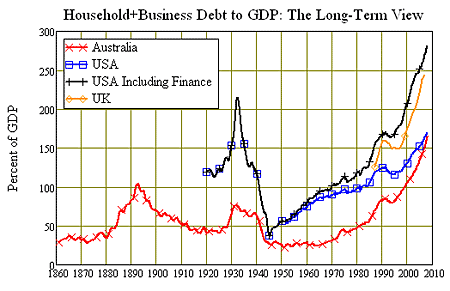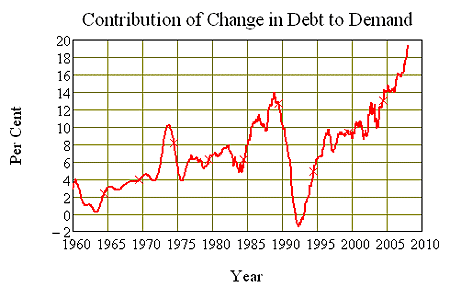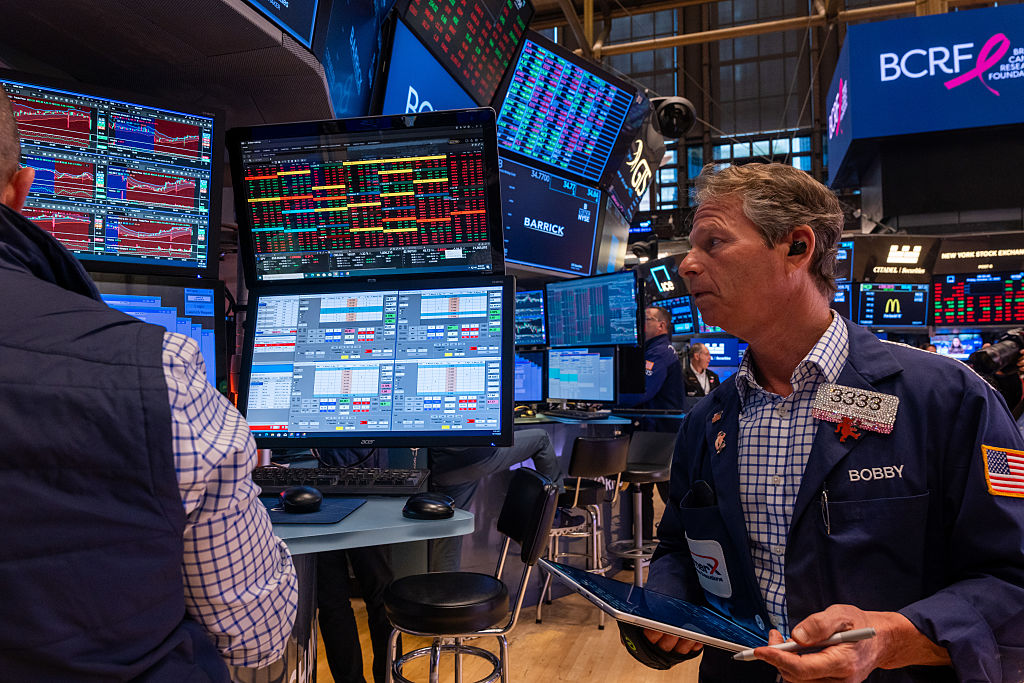Why deflation is really possible
With prices rising rapidly, the suggestion that deflation could be round the corner seems odd. But as the debt binge of the last few years reverses, the possibility creeps ever nearer.
By Paul Amery
It may seem odd to suggest the possibility of deflation at a time when the prices of critical goods food and energy are skying worldwide. The UK CPI inflation rate has just registered a 3.3% annual increase, well above the government's target of 2%, and is forecast to exceed 4% by year-end. The broader retail price index has risen at 4.3% per annum, and people in many sectors of society are seeing their personal cost of living go up at an even faster rate.
Indeed, how can deflation be possible under a fiat currency regime? After all, the value of world currencies has been based purely on faith since President Nixon reneged on the obligation to convert the US dollar into gold in 1971. Since then, the real value, or purchasing power, of a pound, dollar, yen (or lira, mark and franc, and now euro) has fallen substantially, reflecting governments' addiction to budget deficits and inflationary increases in money supply. The only real question for investors has been which currency would devalue first and fastest. The twenty-first century looks to be repeating the experience of the twentieth, as an era of rising prices and a constant slide in the value of the unit of account.
MoneyWeek
Subscribe to MoneyWeek today and get your first six magazine issues absolutely FREE

Sign up to Money Morning
Don't miss the latest investment and personal finances news, market analysis, plus money-saving tips with our free twice-daily newsletter
Don't miss the latest investment and personal finances news, market analysis, plus money-saving tips with our free twice-daily newsletter
As Ben Bernanke, the Chairman of the Federal Reserve, said in a 2002 speech entitled Deflation: Making Sure 'It' Doesn't Happen Here; "the US government has a technology, called a printing press (or, today, its electronic equivalent), that allows it to produce as many US dollars as it wishes at essentially no cost." Unsurprisingly, this speech earned him the sobriquet'Helicopter Ben'.
In fact Bernanke's claim to be able to banish deflation from the history books was nothing startling. It merely made explicit the US central bank's policy, which has been evident in their actions for twenty years or more, to underwrite any fall in economic activity, whether from extraneous events or from the aftermath of a bubble in asset prices. The Federal Reserve's weapons have included interest rate cuts, and more recently direct support to banks' balance sheets through the swapping of illiquid collateral for liquid Treasury securities. And ultimately, as Bernanke says, there is the printing press at hand.
But is Bernanke's confidence justified? Could anything go wrong with the central bankers' plan?
First, there is uncomfortable and recent evidence that deflation can happen under a fiat currency regime. As Mish Shedlock has pointed out in a recent piece, it happened in Japan during the aftermath of their bubble, despite the Japanese authorities' efforts. After the Japanese asset price peak in 1989, property values then fell for eighteen consecutive years, and the stock market (measured by the Nikkei index) lost more than 80% of its value from peak to trough. The overall level of credit contracted by more than the amount the Japanese central bank could add through Bernanke-type printing. In essence, the authorities were overwhelmed.
Second, central bank money creation is only a small part of the overall money supply, with the remainder coming from the financial sector via the expansion of credit. As we have recently witnessed in the US and UK, the fuel leading to the blow-off in house prices was provided by excessively lax lending, both by banks and by what has been called the "shadow banking system", in other words hedge funds and off-balance sheet lenders such as SIVs, conduits and CDOs. An explosion in the overall level of debt in the economy has resulted. To get a feel for the unprecedented scale of this it's worth spending some time looking at the Australian economist Steve Keen's blog, a chart from which is reproduced below.

While Keen's data for the UK only goes back to the mid 1980s, his data suggest that the Anglo-Saxon economies' debt binge has far exceeded the peak of the late 1920s, the period that preceded the great Wall Street Crash and the deflation of the 1930s. The ratio of the UK's household and business debt to GDP has reached 250%, a very similar level to that reached in the USA, once financial sector activities are taken into account.
Another chart from Keen's website shows that an ever-increasing proportion of demand growth has been coming from debt creation, particularly since the turn of millennium. In other words, only by borrowing more have we all, as economic agents, been able to support our spending activity, whether it has been to buy a house, finance the purchase of a car or consumer goods, or to take a holiday. To take an analogy from aviation, it's as if a pilot has opened up the throttle to full to keep his plane in the air. But is the aircraft about to stall anyway due to pilot error?

In the UK at least, we are already witnessing a conflict between the authorities' desire to get lending started again and an unmistakeable public mood supporting retrenchment and living within one's means. It is quite noticeable on newspapers' comment sections that few people support further rises in house prices, for example, and many have welcomed the current fall.
If the trend towards ever-increasing debt levels goes into reverse, as we may already be witnessing, then a major contraction in economic activity must result, and deflationary forces will overwhelm the politicians and central bankers. Debts will be removed from the system, either by repayment or (more likely) by a wave of defaults.
What does this mean for us as investors? It is unremittingly bad news for holders of equities, as companies' earnings will fall dramatically. There will be few, if any recession-proof sectors, and companies that have relied too much on debt will struggle to survive. Property values will decline steadily and to much lower levels, and rents should start to fall as well. The credit spread between private sector debt yields and government debt will rise much further as default rates soar. Energy and food prices should fall back from their current peaks, as global demand falls. Cash will be king, but safe banks will be difficult to find. So gold and silver should continue to rise in price as they return to their historical role as money.
Get the latest financial news, insights and expert analysis from our award-winning MoneyWeek team, to help you understand what really matters when it comes to your finances.
MoneyWeek is written by a team of experienced and award-winning journalists, plus expert columnists. As well as daily digital news and features, MoneyWeek also publishes a weekly magazine, covering investing and personal finance. From share tips, pensions, gold to practical investment tips - we provide a round-up to help you make money and keep it.
-
 Why Trustpilot is a stock to watch for e-commerce exposure
Why Trustpilot is a stock to watch for e-commerce exposureTrustpilot has built a defensible position in one of the most critical areas of the internet: the infrastructure of trust, says Jamie Ward
-
 Tetragon Financial: An investment trust with stellar returns
Tetragon Financial: An investment trust with stellar returnsTetragon Financial has performed very well, but it won't appeal to most investors – there are clear reasons for the huge discount, says Rupert Hargreaves

